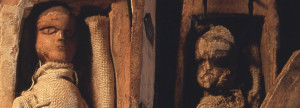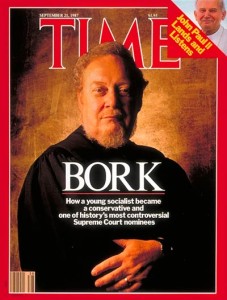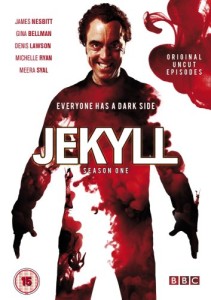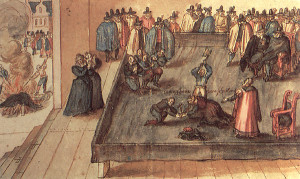My daughter’s off at sleep-away camp this week. This reminded me of my summers up at Aberlour House on Speyside. We would stay up late at night in our dorms, talking about the girls we fancied and telling shaggy dog stories… and scary stories.

They died of a coffin fit!
Of course, we love stories of death and gore here at apoplectic towers. As evidenced by our pending appointment with Dandy Darkly’s Gory Hole on the Fringe. (Plug again, as kindly requested by friend of the blog, Joe, who speaks very highly of the show. Come along, Edinburgers!) I increasingly think that cultural fascination with these stories speaks to our ongoing interest in these matters, and a desire for a deeper understanding of their strange allure (see posts passim). I suspect the Humanist Society Scotland, whom I’ve recently discovered online, might agree, with reference to all sorts of stories.
(Rather wonderfully, HSS Edinburgh have their monthly meetings at Mathers Bar in the East End, which remains reassuringly unchanged over the last sixteen years. I’m a little perturbed to find that it’s briefly closing for refurbishment in the coming days. Having popped in recently, I fear they’ll have to chip the patrons from their stools. Darts-playing pals from Brooklyn: Mathers is a place worth visiting; you’ll recognize the vibe.)
Edinburgh is a great place for spooky tales…. Last Saturday, for example, we went for a walk in Holyrood Park, referring to our rather excellent City Walks: Edinburgh book. Still in sort of tourist mode, I’m picking up all sorts of little bits of knowledge about Edinburgh that I never knew before. Gives one’s home town an attractive additional depth. City Walks relates a creepy story relating to Holyrood Park….
In 1836, five young boys out hunting for rabbits found 17 miniature coffins containing small wooden figures. It seems their purpose has remained shrouded in mystery ever since, but some people believe they were made for witchcraft. More recently, folks have speculated that they may have been connected to the 17 murders known to have been committed by the Edinburgh body snatchers Burke & Hare. The coffins (above) are now on display at the National Museum of Scotland. We’ll have to check them out.
Scottish readers will be familiar with Burke & Hare. US readers may be, too.

Here are a few details: In the context of a general shortage of cadavers available for the teaching of anatomy as medical science began to flourish in the early nineteenth century and the rate of the execution of criminals slowed, medical schools, including the Edinburgh Medical School, had to rely on body-snatchers (or grave-robbers) for a steady supply of “anatomical subjects”. Burke and Hare, who had moved to Edinburgh from Ireland, killed their victims for these purposes, delivering them to a Doctor Knox, who would pay between $1,000-$1,500 in today’s money for the corpses. Although their first cadaver sale related to a bloke who had died of natural causes, they quickly graduated to murder, their killing spree lasting ten months before their arrests. Rather brilliantly, Ian Wiki divulges that “[f]rom their method of killing their victims came the word “burking”, meaning to smother and compress the chest of a murder victim, and a derived meaning, to suppress something quietly.”

Talking of Edinburgh bars and gore, there’s a bar on the Royal Mile called Deacon Brodie’s. It’s named after William Brodie, active in the second half of the eighteenth century. Brodie was a cabinet-maker, deacon of a trades guild and Edinburgh city councillor. He was also the inspiration for Robert Louis Stevenson’s Jekyll & Hyde. He used his day job to gain knowledge about the security mechanisms of his clients and to copy their keys using wax impressions, so as to fund his gambling habit, as well as for thrills. And to maintain a second life in which he fathered five children and kept two mistress’s He was captured after a failed armed raid on an excise (or tax) office in 1786. But here’s the clincher….
What really makes this a story is that when Brodie was hanged after a failed armed raid on an excise office, it was from a gallows Brodie himself had designed and funded the year before. Back to Ian:
According to one tale, Brodie wore a steel collar and silver tube to prevent the hanging from being fatal. It was said that he had bribed the hangman to ignore it and arranged for his body to be removed quickly in the hope that he could later be revived.
Notwithstanding reports of Brodie subsequently being seen in Paris, the plan failed, and Brodie was buried in an unmarked grave in Edinburgh.

Going back up the road to Holyrood, one can tour Holyrood Palace, and walk in the hidden stairwell used for the murder of Mary Queen of Scots‘ private secretary, friend and alleged lover, David Rizzio. Although contemporary reports of Rizzio described him as ugly, short and hunch-backed, the Queen’s husband, Lord Darnley, was suspicious of their relationship and conspired to cause Rizzio’s death. Lord Ruthven led a group of rebels into the supper chamber of Mary (who was seven months pregnant at the time). Notwithstanding the rebel’s demands, she refused to hand Rizzio over. He hid behind Mary, who was in turn threatened at gun point. Although Mary and Rizzio’s screams brought several hundred supporters to Holyrood, Rizzio was stabbed — and this is the bit that stays with me nigh on three decades after hearing about it on a tour of the Palace — fifty-six times. A frenzied attack, one might say.
Within a year, Darnley himself was dead, apparently strangled in the aftermath of an escape from two explosions under his bedroom. This time, suspicion fell on Mary and the Earl of Bothwell, who had long been suspected of having designs on the throne and whose close relationship with the queen also gave rise to rumours that they were sexually intimate. Less than six months later, Mary was forced to abdicate, and was eventually executed under the (it seems, reluctant) warrant of her first cousin once removed, Elizabeth I of England. According to the eye witness account of one Robert Wynkfielde, this was a particularly grisly event in its own right.

It took three swings of the axe to behead Mary, after the first struck the back of her head and the second left her head hanging by “one little gristle”, which was then cut through using the axe. When the executioner finally held the head up for the crowd to see, her red wig fell from her head, and her own hair
appeared as grey as one of threescore and ten years old, polled very short, her face in a moment being so much altered from the form she had when she was alive, as few could remember her by her dead face. Her lips stirred up and down a quarter of an hour after her head was cut off.
Her body then appeared to move, too, until it transpired that her little terrier, Geddon, had been hiding in her skirts. Covered in his mistresses blood, he was then removed from the scene.
Sweet dreams, apoplectics. Here’s some final horrors for you:
http://www.youtube.com/watch?v=Cor3wjbS4Gg





The alt-text now working on the pics makes a big difference!
Yes, that’s where some of the best stuff is. Don’t miss ’em, apoplectics!
Thanks for the pointer. I hadn’t alternated yet. Your comments were just Easter Eggs spoiling away and no doubt becoming increasingly sulphurous, which though that’s very befitting this post, would have ultimately done me no good.
Well, I’d certainly prefer that they retain their sweet, chocolatey goodness. As Black Francis almost sang, gorge away.
A very interesting read my friend. Although I struggled the whole way through with the word “holyrood” and how it sounds distinctly similar to the name of a fantasy land in California spoken with a curious accent…
Thanks, pal. From today’s rejected facts: In the C12th, King David I was hunting in the area of what is now called Holyrood. Having broken off from the group, he was thrown from his horse when it was frightened by a stag. Then, when it seemed the stag would attack the king, a crucifix appeared between its antlers, and it ran away. (Well, we’ve all had that experience.) That night, David had a dream in which he was told to build an abbey in thanks for this miraculous deliverance — the Abbey of Holyrood, with “rood” being a medieval word for “cross”.